Featured Articles
Still No Consensus on Rocky Marciano’s Place in Boxing History
Aug. 31 marks the 45th anniversary of the day when Rocky Marciano died in the crash of a small plane in an Iowa cornfield. The only heavyweight champion to quit the ring while undefeated — he was 49-0, with 43 knockouts, following his final bout, a ninth-round knockout of the great Archie Moore on Sept. 21, 1955 — Marciano was on his way to a celebration of his 46th birthday the following day, Sept. 1, in Des Moines, but he and the Cessna 172’s other two occupants, both of whom also perished, never got there.
More than four decades later, boxing historians and fight fans of a certain age who actually saw Marciano bludgeon his way to the top are still divided as to whether the “Brockton Blockbuster,” just 32 when he announced his retirement on April 27, 1956, is truly among the best of the best, or an inelegant but sturdy brawler who was fortunate enough to come along during a fallow period in the heavyweight division that fell between the more regal reigns of Joe Louis and Muhammad Ali.
Opinions as to Marciano’s place in the all-time heavyweight pecking order are as strongly stated, and as widely diverse, as any that can be found in the fight game. His crushing overhand right, which he had dubbed the “Suzie Q,” has to rate as one of the most potent weapons in the arsenal of any fighter. But, some critics sniped, that big right hand, as well as Marciano’s relentless determination to succeed and seeming imperviousness to pain, were the only real assets of a short (5-10¼) and short-armed man (his reach of 68 inches is 4 inches shorter than welterweight Floyd Mayweather Jr.’s) whose original goal was to become a catcher in baseball’s big leagues. That dream died when Marciano, a decent hitter with a bat in his hands, was sent home without a contract from a Chicago Cubs tryout camp in Fayetteville, N.C., in 1947 because of – get this – a weak throwing arm.
Even when he won, Marciano was sometimes targeted for barbs that stung his pride as much as the punches he received from gloved opponents. In writing of Marciano’s emphatic stoppage of Moore, the 175-pound champion who was moving up in weight, Nat Fleischer, founder of The Ring, noted that the winner was “crude, wild-swinging, awkward and missed heavily.”
After his eighth-round TKO of a 37-year-old Joe Louis on Oct. 26, 1952, in Madison Square Garden, Arthur Daley was almost contemptuous in his dismissal of the then-29-year-old Marciano as a worthy heir to the twice-removed crown of the faded “Brown Bomber.”
“The Louis of 10 years ago would have felled Rocky with one punch,” Daley wrote. “Louis losing is more important than Marciano winning.”
Even Marciano’s very astute trainer, Charley Goldman, had to admit that his man had rough edges that could never be completely sanded smooth by any chief second, no matter how much time and effort was put into the attempt. Marciano had only taken up boxing in the Army to get out of kitchen duty and other less-than-desirable assignments, and although he won the 1946 Armed Forces boxing tournament, he was just 8-4 as an amateur, getting by almost solely on crude, raw power.
In recalling his first glimpse of “prospect” Marciano, Goldman jotted down all his negatives into a notebook: wild punches, poor balance, legs too far apart, stride too long, non-existent defense, over-reliance on his right hand and a disinclination to throw combinations, among other things. But when the kid connected, he somehow made magic.
“Marciano was so awkward we just stood there and laughed,” Golden was quoted as saying in author Bert Randolph Sugar’s 2005 book, “Boxing’s Greatest Fighters.” “He didn’t stand right, he didn’t throw a punch right. He didn’t do anything right.”
Later on, as Marciano continued to knock everyone stiff, Goldman, who had previously been the manager-trainer of middleweight titlist Al McCoy, allowed that “I got a guy who’s short, stoop-shouldered and balding with two left feet. (Rocky’s victims) all look better than he does as far as moves are concerned, but they don’t look so good (laying) on the canvas.”
So what is the most accurate assessment of what Rocky was, or wasn’t?
Sugar, always opinionated and frequently controversial, had Marciano at No. 14 on his list of the 100 greatest fighters of all time, and the fifth-best heavyweight, behind Louis (4), Ali (7), Jack Dempsey (9), Jack Johnson (10) and Gene Tunney (13). Other renowned big men who fell in behind The Rock were Sam Langford (16), Ezzard Charles (24), George Foreman (31), Joe Frazier (37), Evander Holyfield (42), Larry Holmes (45), John L. Sullivan (54), Bob Fitzsimmons (66), Jim Corbett (69), Sonny Liston (73), Jersey Joe Walcott (79), Peter Jackson (80), James J. Jeffries (84) and – obviously, a lot of fight fans will dispute back-of-the-line status – Mike Tyson (100).
“As indestructible as any fighter in history, Marciano walked into, and through, thousands of hard, clean jolting shots in the manner of a human steamroller, wrecking his opponents with baseball-bat swings to the arms, the midsection, the head, and just about anything else within reach,” Sugar wrote. “Always ready to give two or three punches to land one, the determined Marciano melted down the guards of his opponents, and with the shortest arms of any champion in the history of the heavyweight division, hewed them down to size.”
Moore, who was on a 21-bout winning streak when he challenged Marciano, wasn’t about to dispute Sugar’s assessment. “The Mongoose” holds the all-time professional record with 131 knockout victories, so he knows a thing or two about what it feels like to deliver and to be on the wrong end of a takeout shot. And Marciano, he marveled, rose above all the big bangers of his acquaintance.
“Marciano is far and away the strongest man I’ve ever encountered in almost 20 years of fighting,” Moore said in an article that appeared in the New York Times the day after the bout. “And believe me, I’ve met some tough ones.”
The Rocky Marciano story is pure Americana, regardless of where the so-called experts are apt to place him on their best-of lists. The grandson of Italian immigrants, the young Rocky – whose birth name was Rocco Marchegiano; it was changed by his manager, Al Weill, because Weill thought the shortened version was easier to pronounce and to fit in newspaper headlines – grew up knowing only that he didn’t want to work in the shoe factory where his father, Pierino, worked long hours for short wages under dismal conditions.
Perhaps Marciano’s burgeoning popularity owed in part to the exciting nature of his no-frills, all-thrills style; he was involved in The Ring’s Fight of the Year in three consecutive years, from 1952 through ’54, scoring knockouts of Jersey Joe Walcott, Roland La Starza and Ezzard Charles (the last two were rematches). Maybe it was because he was seen in some quarters as a “White Hope,” the man who would end a 17-year domination of the heavyweight division by black fighters that had begun with Louis and extended on to Charles and then Walcott. There also was the constant expectation of sudden lightning, a thunderbolt in the late going of bouts Marciano was trailing on the scorecards, with his undefeated record further endangered with each passing round.
Such was the case in his challenge of Walcott, who had wrested the championship from Charles on a seventh-round knockout on July 18, 1951, in Pittsburgh, the putaway blow a perfectly timed, walk-in left hook that was and still remains one of the most aesthetically perfect punches in boxing history. For all the world, it looked as if Jersey Joe was headed to an even more significant triumph, increasing his points lead over the bull-strong Marciano as the fight, scheduled for 15 rounds on Sept. 23, 1952, in Philadelphia’s Municipal Stadium, headed into the 13th. Marciano clearly needed a knockout to claim the title, and he knew it. So, you would have thought, did Walcott.
But Walcott wanted to chisel boulder that had been The Rock down to a pebble, and he attempted to put an exclamation point to his seemingly imminent success in that fateful stanza by stepping up the pace even more. Instead he was sent down and out by what might have been the most spectacular one-punch knockout ever, a short – maybe six inches – right to the jaw that landed with the force of a meteor slamming into the earth. Walcott, whose face was distorted into that of an anguished gargoyle at the point of impact, was unconscious as he slid down the ropes. Referee Charlie Daggett went through with the formality of a count, but he could have tolled to 100 and Walcott wouldn’t have risen in time.
After vanquishing Moore, however, the inner fire that had always burned so hot into Marciano began to cool. His retirement stuck after he defeated Moore, who had decked him in Round 2, although Rocky was sorely tempted to go for win No. 50 after Sweden’s Ingemar Johansson lifted the heavyweight title from Floyd Patterson on a third-round TKO on June 26, 1959, in Yankee Stadium.
“I don’t want to be remembered as a beaten champion,” said Marciano, who understood how great the difference was between 49-0 and 49-1, for the purpose of retaining the unique legacy he had consecrated with his blood. And so he walked away from a seven-figure payday that would have added a bundle to the $4 million or so in career earnings he had amassed at a time when a million dollars went a hell of a lot further than it does now.
There would be one more moment of semi-glory for Marciano, however. A Miami-based entrepreneur named Murry Woroner in 1967 came up with the idea of a “fantasy boxing tournament” to determine the best heavyweight of all time, the results of which would be spit out by something called the NCR 315 computer. The data on 16 all-time greats fed into the gadget, admittedly primitive by today’s standards, and in the final Marciano emerged as the winner via 13th-round knockout of Jack Dempsey.
Muhammad Ali – who was in the midst of his three-year suspension from boxing for refusing to be inducted into the Army and whom the computer had deemed a quarterfinals loser to James J. Jeffries – filed a $1 million lawsuit against Woroner for defamation. Ali claimed that Woromer had, in effect, stolen his good name by rigging the computer to have him lost to someone he claims he could have beaten a hundred times in a hundred tries.
Woroner slipped the legal punch by offering Ali a filmed fantasy fight against Marciano, who was 45 and had not fought in 13 years. Both men signed on, and the filming took place in early 1969 with a flabby Ali nearly 40 pounds over his best fighting weight and Marciano, wearing a toupee for vanity’s sake, 45 pounds lighter thanks to a crash diet. Seventy one-minute rounds were filmed, including seven different endings. Neither Ali nor Marciano, it was said, was told beforehand which outcome would used in the telecast, to be shown in some 1,500 closed-circuit locations around the world.
A Philadelphia Inquirer reporter, Arnold Davis, told Ali – who was cash-strapped and who reportedly accepted Woroner’s offer of $9,999 to participate – that he was crazy if he thought the final cut would have him winning.
“The end is supposed to be a mystery? To whom?” Davis asked Ali. “Marciano will beat you bloody. And it will sell like hell in South Africa, to say nothing of Indiana and Alabama.”
As Davis had predicted, Marciano did win, coming from behind to win by a knockout in the 13th round, just as he had done in his title-winning bout with Walcott. An unusually gracious Ali, speaking to Howard Cosell on ABC’s Wide World of Sports in 1976, said, “I think on my best day and his best day I would have beaten him, (but) probably not knocked him out. I think he was better than Joe Frazier, and you know what Joe Frazier did to me.”
Three months after the Ali-Marciano “fight” became a cause celebre, Rocky’s plane crashed in that Iowa cornfield and his legend was forever set, no longer susceptible to the alteration of ongoing events.
So, again, the question must be asked: How good was The Rock? Better than his detractors insist, or worse than his admirers claim?
Given Marciano’s squatty build and comparative lack of heft – his highest weight for any fight was 192½ pounds – his most obvious reference points are Frazier and Tyson, similarly constructed close-to-the-ground power punchers.
Boxing writer Monte D. Cox said transposing Frazier’s opponents with Marciano’s tells you all you need to know. “Is there one person that Marciano beat that Joe Frazier would not beat?” he asked. “The answer is clearly no. Joe Frazier would have little trouble with Marciano’s opponents and would easily have gone 49-0 against them … Had the two all-time greats switched eras, Frazier would have been 49-0 and Marciano would likely have had losses to Ali and Foreman on his record.”
But the floating of hypotheticals is easy. It is human nature to remember what we care to remember, to believe what we want to believe, and we will furiously forward our point of view with those holding a contradictory position. So let Peter Marciano, whom I interviewed in 2006, offer his thoughts on his older brother in response to all the Monte Coxes who would cast aspersions upon Rocky’s memory.
“Any fighter you might mention – and I like to believe I’m not being prejudiced – could not have beaten Rocky,” Peter said. “I honestly believe that. The only way I can ever imagine him losing is on an accidental head-butt, a head cut or something like that. Forget size. Rocky was tremendously strong. His strength was, and I hate to use the word, but it was almost superhuman. Big guys were made for him. The bigger they were, the easier it was for Rocky to tire them out and then to knock them out.
“Muhammad Ali was terrific, but it wasn’t just his speed and mobility that made him a great champion. It was his mental strength. He believed, as Rocky did, that he could not be beaten. The difference between them is that Ali told everyone how good he was and Rocky, who was a very humble man, did not feel he had to come out and say it. It was enough that he knew it.
“The other difference, of course, is that Rocky was never beaten.”
Which brings us back to that 49-0 record which remains the unassailable summit that all other heavyweight champions have endeavored to scale without success. Larry Holmes came closest, getting to 48-0 before he was dethroned on a close but unanimous 15-round decision to Michael Spinks on Sept. 21, 1985, in Las Vegas – ironically, but not coincidentally, the 30th anniversary of Marciano’s 49th and farewell win against Moore.
At the postfight press conference, a miffed Holmes said, “Rocky Marciano couldn’t carry my jockstrap,” a rather indelicate statement considering the fact that Peter Marciano was on hand to offer a congratulatory handshake he really didn’t want to extend, and now didn’t have to.
“Quite honestly, I never want to see Rocky’s record broken,” Peter said. “As a boxing fan, if someone is good enough to ever do it, I would tip my cap to him. But I think the chances of that happening is almost non-existent given the current landscape. The best fighters don’t fight more than two or three times a year once they achieve pay-per-view status. That makes it difficult for the elite guys to even have 50 fights, much less to win them all.”
Marciano’s sheen of perfection is not entirely resistant to the shadow of doubt. In his first fight with La Starza, who was 37-0 at the time, The Rock won a decision that was more than a little disputed. And if title fights went 12 rounds in his day, instead of 15, he would never have gotten the chance to starch Walcott in Round 13. As another Rocky – that would be Graziano – once said, “Somebody up there likes me.” And that may well have been the case for Marciano, who didn’t get to 49-0 easily, but got there nonetheless.
The fight game is primordial, and that is reason enough to have an affinity toward the Marcianos and the Fraziers and the Tysons, who give it all that they have for as long as they have it. They strike a chord within us, the sound of a wolf howl, reminding us that at our core we perhaps aren’t really as prim and proper as genteel society might prefer.
“Rocky is not in there to outpoint anybody with an exhibition of boxing skill,” Ed Fitzgerald, one of the top sports writers of the Marciano era, observed. “He is a primitive fighter who stalks his prey until he can belt him with that frightening right-hand crusher. He is one of the easiest fighters in the ring to hit. You can, as with an enraged grizzly bear, slow him down and make him shake his head if you hit him hard enough to wound him, but you can’t make him back up. Slowly, relentlessly, he moves in on you. Sooner or later, he clubs you down.”
Rest in peace, Mr. Marciano, and know that a little bit of you lives on in certain select fighters who know that even the sweet science sometimes needs an infusion of sweet savagery.
-

 Book Review4 weeks ago
Book Review4 weeks agoMark Kriegel’s New Book About Mike Tyson is a Must-Read
-
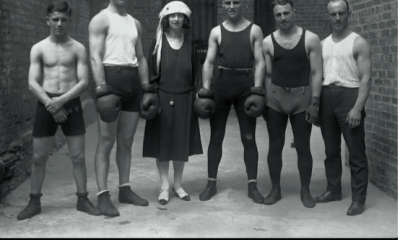
 Featured Articles3 weeks ago
Featured Articles3 weeks agoThe Hauser Report: Debunking Two Myths and Other Notes
-
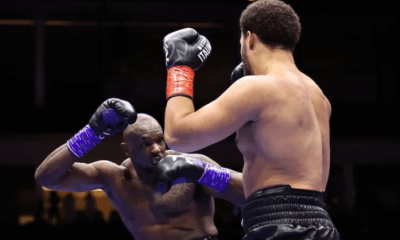
 Featured Articles3 weeks ago
Featured Articles3 weeks agoMoses Itauma Continues his Rapid Rise; Steamrolls Dillian Whyte in Riyadh
-
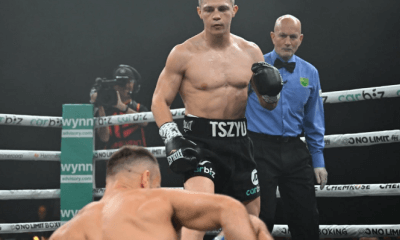
 Featured Articles3 weeks ago
Featured Articles3 weeks agoNikita Tszyu and Australia’s Short-Lived Boxing Renaissance
-
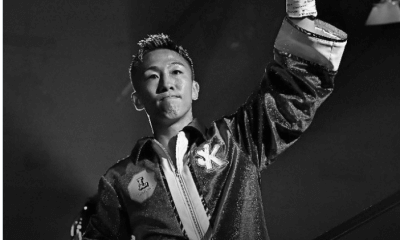
 Featured Articles4 weeks ago
Featured Articles4 weeks agoKotari and Urakawa – Two Fatalities on the Same Card in Japan: Boxing’s Darkest Day
-
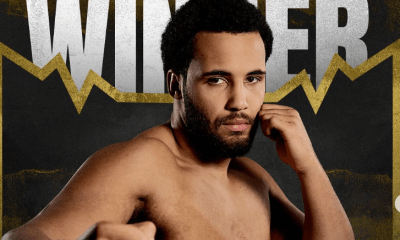
 Featured Articles3 weeks ago
Featured Articles3 weeks agoIs Moses Itauma the Next Mike Tyson?
-

 Featured Articles2 weeks ago
Featured Articles2 weeks agoBoxing Odds and Ends: Paul vs ‘Tank,’ Big Trouble for Marselles Brown and More
-

 Featured Articles3 weeks ago
Featured Articles3 weeks agoAvila Perspective, Chap. 340: MVP in Orlando This Weekend














